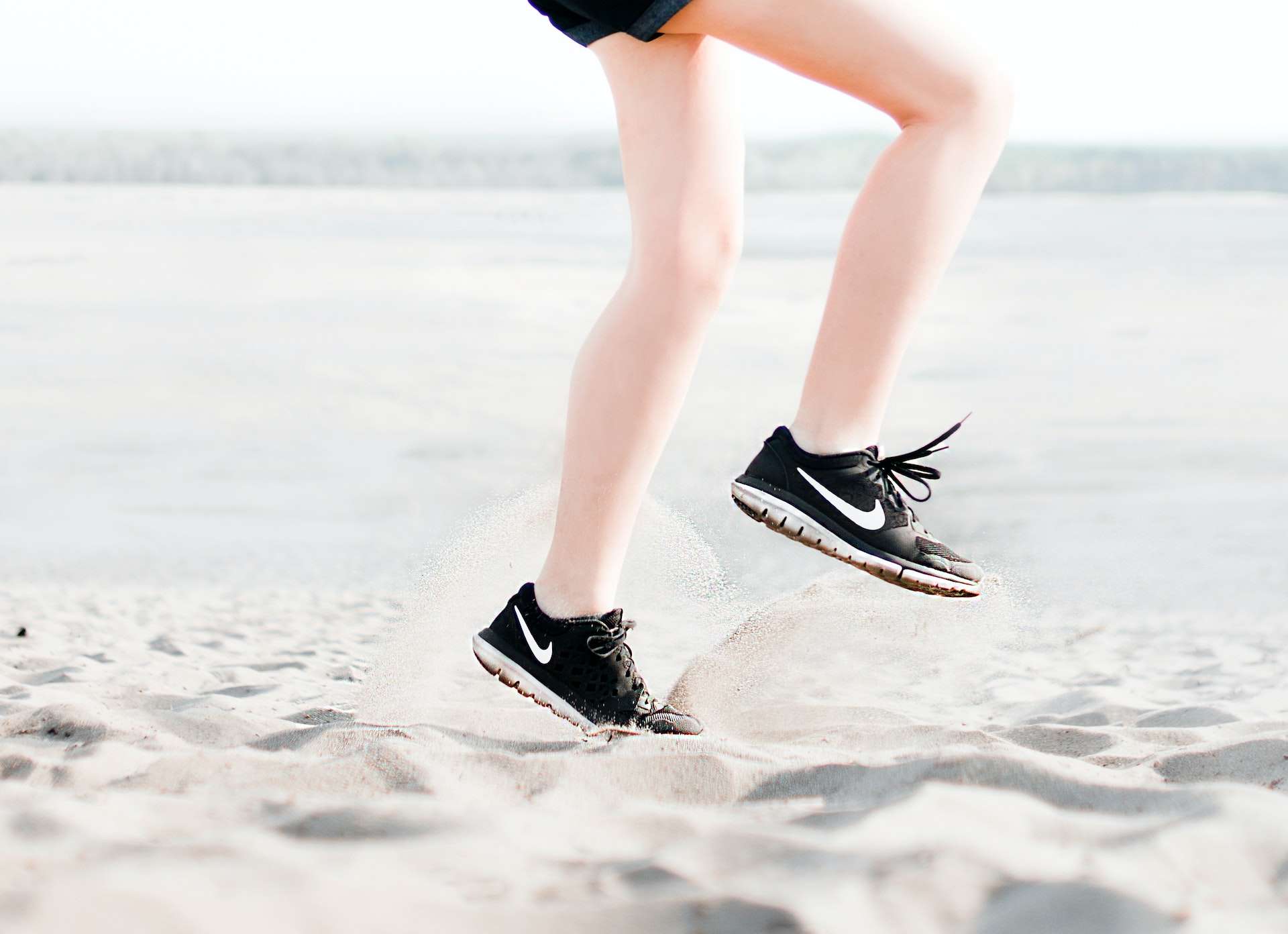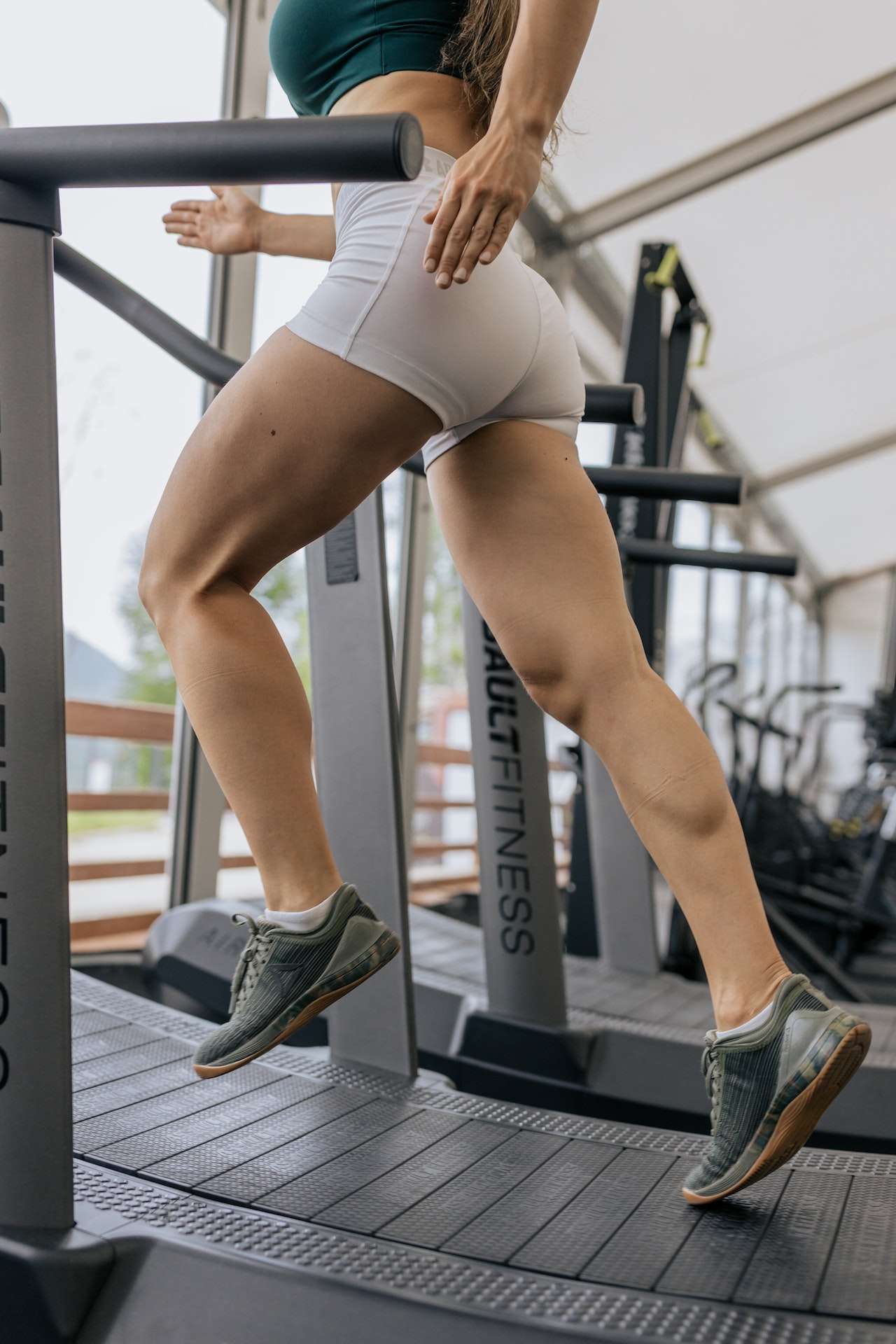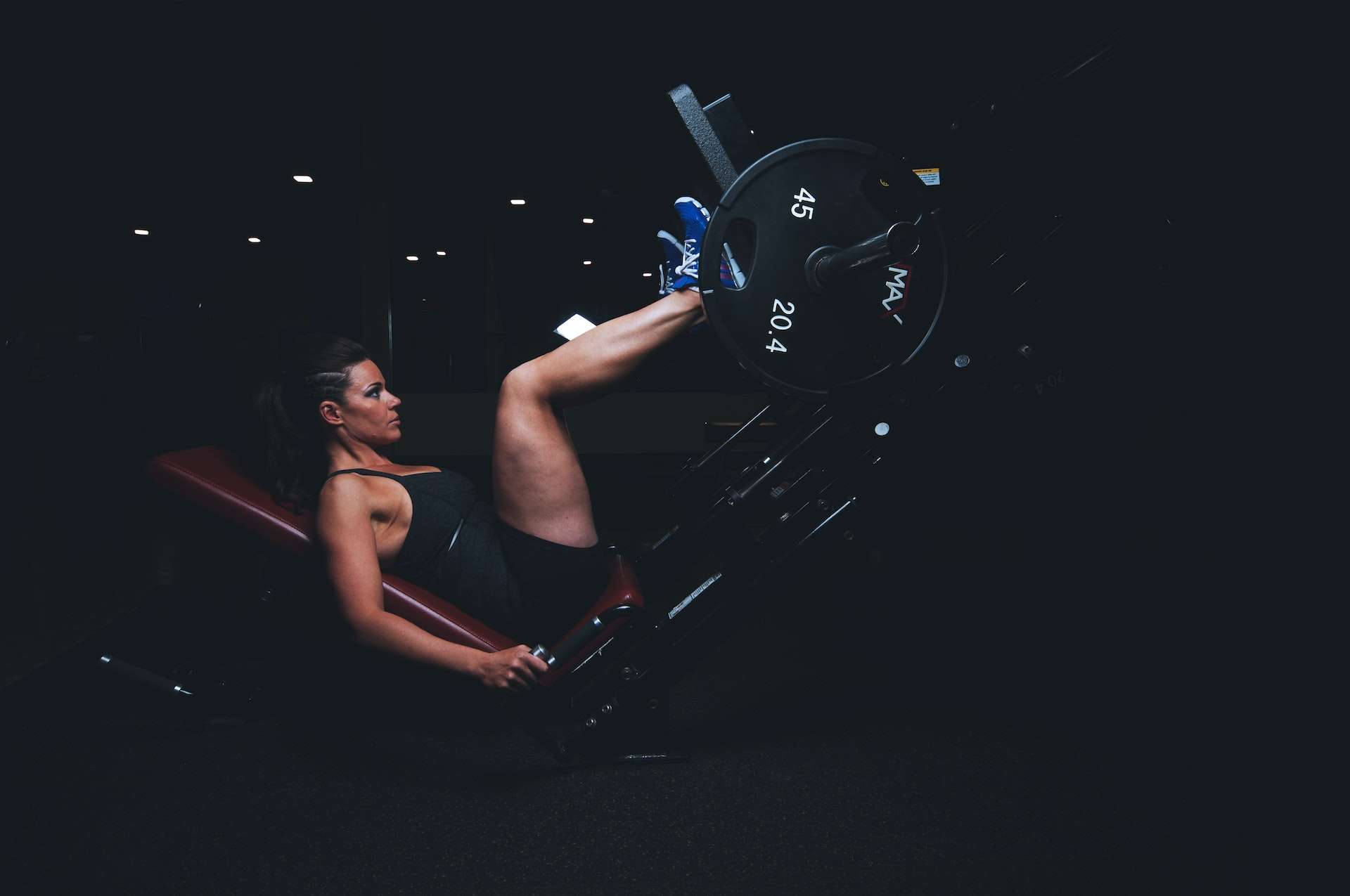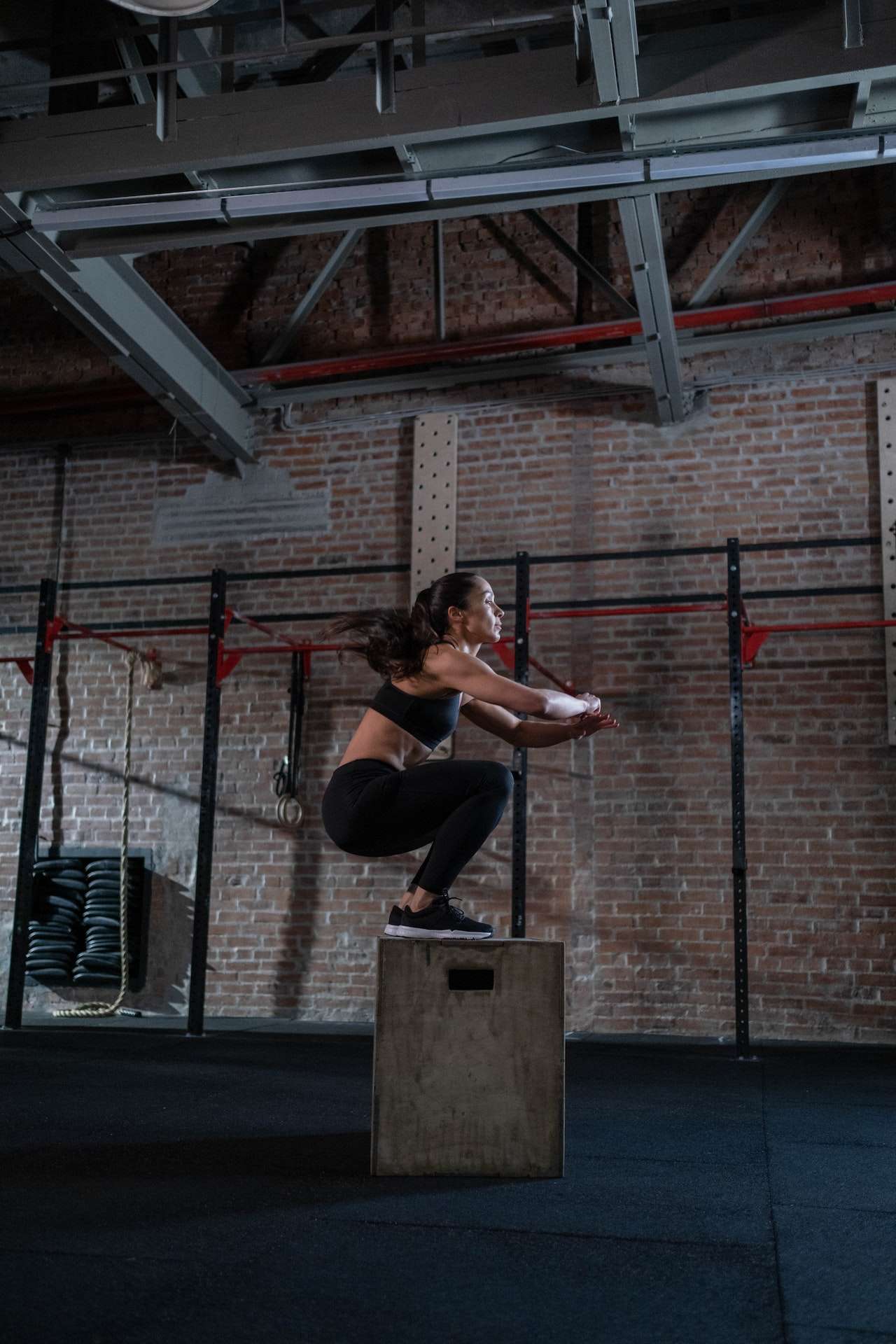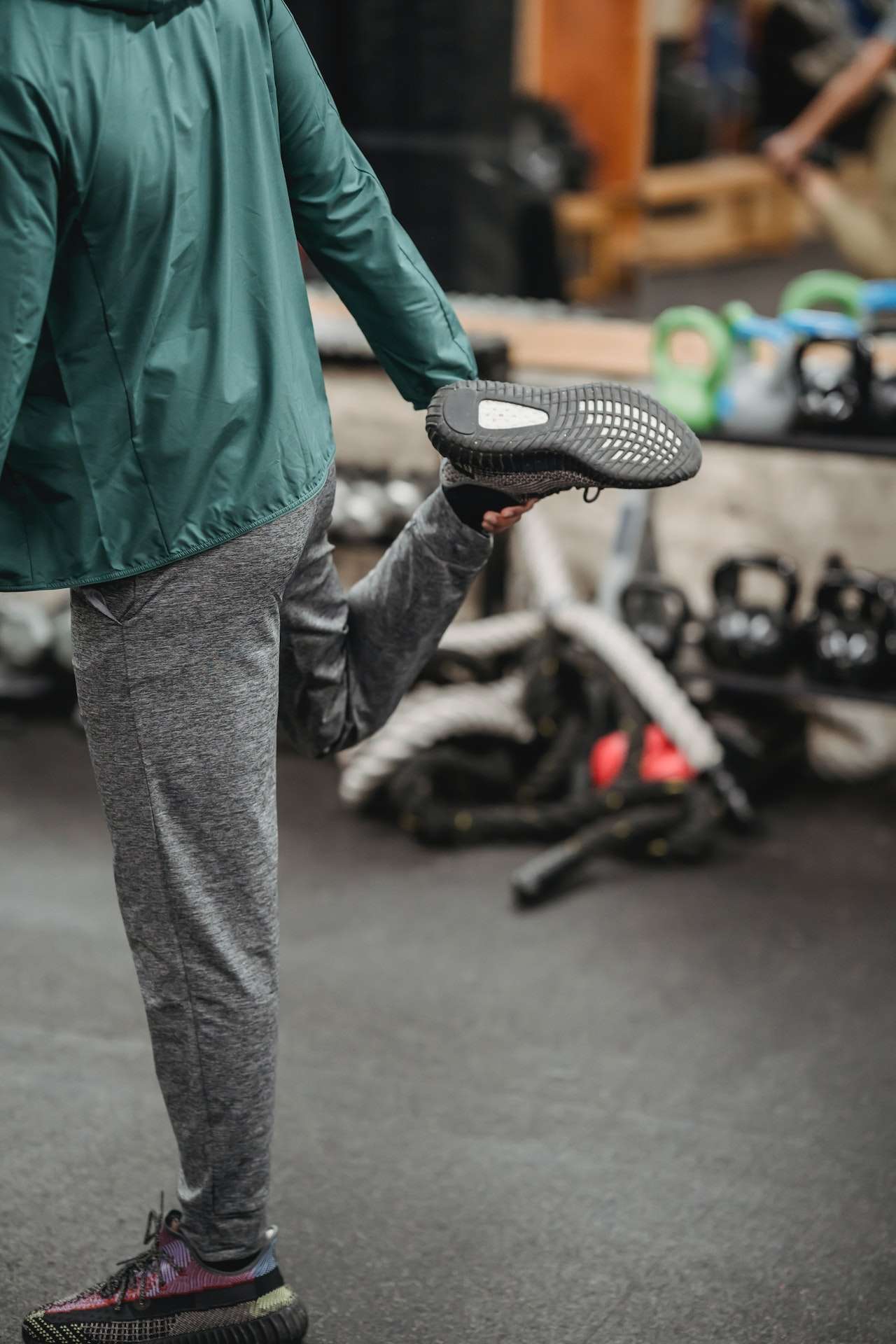| Are you ready to take your running game to the next level? If so, you’re likely looking for ways to strengthen your knees.
After all, if your knees can’t handle the pounding of running on pavement or trails, you won’t be able to reach the speeds and distances you are aiming for. You’ve come to the right place! Let me help you get off to a good start with this article about exercises that will help strengthen your knees before running. But first, let me ask you something: Is it possible to be too eager to strengthen your knees? Sure, I know we all want more speed and endurance in our runs, but let’s be honest – is it worth risking injury by pushing yourself too hard? Of course not! Let’s take a few moments and discuss how we can adequately prepare our bodies for a run without harming ourselves. This article isn’t just about starting up an exercise routine that will help strengthen your knees – it’s also about finding a balance between taking risks and being sensible. Every runner wants to reach their goals without worrying about setbacks due to injuries. By using the right exercises and techniques, you’ll be able to make sure that happens – so what are we waiting for? Let’s get started!
Table of Contents
show
Knee Strengthening Exercises For RunnersAs a runner, knee strength is a crucial component to success. After all, it’s hard to keep up those miles if your knees are aching and painful. Consider strengthening your knees before running to avoid pain or discomfort. The first step is to identify the source of the knee pain. Is it when you walk? Run? Or both? Once you have identified the cause, it’s time to investigate potential causes. Your form needs some work, or your glutes and core aren’t firing correctly when you’re running.
Whatever the issue, some exercises can help strengthen the area around the knee and reduce pain or discomfort when running. From single-leg squats to fire hydrants and monster walks, plenty of exercises will help target your specific knee issues. Start by incorporating them into your warm-up or post-run routine and see how they affect your performance over time – with consistency and dedication; you’ll soon notice a difference in how your knees feel when running! Importance Of Knee Strength For RunningIt’s no secret that solid knees are essential for running. Whether training for a marathon or just jogging around the neighborhood. Strong knees can help you prevent injuries and stay healthy; that’s why it’s so important to understand the importance of knee strength for running. An anachronism: Before taking on a new running regimen, you must know what you’re getting into! Knee pain when running is a common complaint among athletes. Knee pain when running downhill, knee pain when running long distances, knee pain running form, and knee pain running fix can all be prevented with proper strengthening exercises. Additionally, many runners suffer from knee pain when running on hard surfaces, knee pain on the inside of the leg, and knee pain due to impact and mechanics while running. These issues can be addressed by strengthening the muscles around your knees to decrease your risk of injury. By doing exercises specifically designed to strengthen your knees before you start a running program, you’ll be able better to protect yourself from potential injuries down the line. This will reduce your risk of developing chronic conditions like runner’s knee or IT band syndrome and allow you to enjoy your runs with less discomfort and more confidence in your body’s ability to cope with whatever terrain’s way. Developing strong knees before hitting the road to staying safe and enjoying every mile of your run is critical! Common Knee Injuries In Runners And How To Prevent ThemRunning is a great way to stay fit and healthy, but it can also put a lot of strain on your knees. Knee injuries are among the most common in runners, so it’s essential to understand how to prevent them—knowing what causes knee pain when running can help you prepare for an injury before it happens. Here are four things you should know about knee pain when running: 1) Knees can hurt after running if the muscles surrounding them aren’t strong enough. Weak knees can be more prone to injury, so strengthening exercises like squats are essential for runners. 2) It’s not unusual for people to experience knee pain when running up or downhill. If this happens, stretch and warm up before tackling hills or other complex terrain.
3) After ACL surgery, you may experience knee pain while running due to the healing process and weakened muscles. Make sure you ease into your running routine and give yourself time to recover fully before increasing your pace too quickly. 4) Many people report experiencing knee pain while running on treadmills because they don’t get enough support from the treadmill’s surface or their shoes. Choosing the right shoes and using a mat under your treadmill can help alleviate this issue. The best way to prevent knee injuries is by strengthening your knees before running, which is why squats are an effective exercise for runners. Squats help build strength in the quadriceps, hamstrings, and glutes—all of which support the knees during a run—so they’re essential for keeping those joints healthy and safe from injuries! Squats: The Best Exercise For Knee StrengthSquats are an essential exercise to strengthen your knees before running. They not only help prevent knee pain when running but also help with issues like knees hurt when running beginner and knee pain when running child. Squats target the muscles around the knee that can weaken over time, leading to problems such as sharp knee pain when running downhill, outside knee pain when running downhill, lateral knee pain when running downhill, and medial knee pain running exercises. Strengthening these muscles means you won’t be as prone to injuries like knee pain after excessive running or discomfort from a long run on concrete. Adding squats into your routine will help build up the strength in your legs, so you can go further and faster without feeling any discomfort in your knees! It’s important to remember that squats alone aren’t enough for solid and healthy knees. You must incorporate other exercises, like lunges for stability and strength, to ensure your runs go smoothly. Lunges: A Great Exercise For Knee Stability And StrengthDo you experience knee pain when running, climbing stairs, or even going down hills? Lunges are a great exercise to help strengthen your knees and improve stability. Not only can lunges give you an excellent workout for your legs, but they can also help with common knee issues. Here are three key benefits of incorporating lunges into your training routine:
Lunges are a great way to add variety to your workouts while targeting specific areas of weakness to reduce knee pain when running flat feet or going up steps. These exercises strengthen key muscle groups to give you more stability and support to hit those personal bests without worrying about knee discomfort! We move on to another essential exercise for knee strength – step-ups… Step-Ups: A Functional Exercise For Knee StrengthStep-ups are a great exercise to strengthen the knees, especially for those who experience knee pain when running. This functional exercise is perfect for athletes, as it mimics the movement of running up steps or climbing stairs. It’s also an excellent way to build the muscles around the knee joint and prevent knee pain when squatting, cycling, backward running, and bending running. For those who suffer from knee pain when running in cold weather or on downhill slopes, step-ups can help reduce inner knee pain by strengthening the muscles that support the joint. They can also relieve knee pain running down the leg or back of the calf. Step-ups are relatively easy to perform and can be modified depending on your fitness level. To do a basic step-up, stand in front of a step or bench with one foot on top and the other on the floor. Push off your top foot to drive onto the bench while keeping your other foot firmly planted. Keep your spine straight and avoid any jerky movements throughout the exercise. Once you reach the top position, slowly lower yourself until both feet touch the ground again before repeating for desired reps and sets; with practice, you can increase your repetitions and intensity for more challenging workouts! Leg Press: A Machine-Based Exercise For Knee StrengthThe leg press is a machine-based exercise that can help strengthen your knees for running. It’s an effective way to target the muscles in your legs and build knee strength, reducing pain from running and other common causes of knee pain, like IT band issues or being overweight. The leg press can relieve running-related knee pain, making it easier to go up and down stairs, run on trails, or even walk without discomfort. Using the leg press machine correctly, you can isolate specific groups of muscles in your legs to build strength and reduce any knee pain you may have had when running.
Make sure to use a comfortable weight that allows you to complete the exercise with proper form while also pushing yourself enough that you’re challenging those muscles and seeing results. You’ll be able to tell when your legs are getting stronger! With regular practice of this exercise, you’ll be able to enjoy running without worrying about knee pain or injury. The leg press isn’t the only exercise that can help you build solid knees for running; leg extensions and leg curls are isolation exercises meant to target muscle groups related to the knees. These exercises are great for strengthening individual muscles so they don’t get overworked when running, helping reduce any knee pain you may experience… Leg Extensions And Leg Curls: Isolation Exercises For Knee StrengthYou are strengthening your knees before running can be a great way to avoid the dreaded knee pain that comes with it. Leg extensions and leg curls are two isolated exercises that can help you build up your knee strength, making it easier to take on the challenge of running. To get the most out of these exercises, it’s essential to focus on form and technique. Here’s a three-step guide to ensure you’re getting the most out of your leg extensions and leg curls:
By following this routine regularly, you’ll be able to experience less knee pain when running, especially if you’ve been having issues with your knees hurting after running every day or feeling pain after running faster than usual and going upstairs. Over time, these exercises will help reduce knee pain from running and provide gradual relief from any pre-existing discomfort while doing more intense activities like sprinting or jogging faster than usual. The strengthening benefits of leg extensions and curls make them an invaluable part of any warm-up routine before starting any physical activity. With regular practice and patience, you’ll be ready to move on to more dynamic exercises like plyometric exercises for knee strength and power in no time! Plyometric Exercises For Knee Strength And PowerPlyometric exercises are an essential part of any knee-strengthening routine. They challenge the muscles and ligaments around your knees, helping to build strength and power for running, hiking, and other activities. Plyometrics can help prevent knee pain after running hills or in new shoes by increasing the elasticity of your muscles and ligaments.
Plus, they can help with intermittent knee or joint pain when running. The most common knee-health plyometric exercises include squats, box jumps, lateral hops, and skaters. All these exercises will help you build strength and power in your legs while reducing the risk of knee injury related to overuse or sudden impact. Start with a warm-up, such as jogging or walking, before doing any plyos to prevent muscle strain or potential injury. When doing plyometric exercises to improve knee strength, it’s essential to be mindful of form so as not to cause further damage. If you experience intense, why do my knees hurt when you run? Pain under the kneecap when running? Or general knee pain running medial? Stop immediately and consult a doctor or physical therapist. Knee pain when running ice or heat may also require medical attention. To ensure the safe use of plyo exercises for your knees, seek advice from a professional first. With proper form and guidance from a professional, plyometrics can effectively strengthen your knees for optimal performance during exercise activities like running and hiking! Stretches To Improve Knee Flexibility And Range Of MotionGetting ready to run can be daunting, especially with nagging knee pain. Whether you’ve been sidelined due to an injury or are just trying to prevent one, stretching your knees and improving your flexibility before running is essential. Stretching before running helps to ensure that your knees have the range of motion necessary for a successful run. Without adequate flexibility, you may experience pain while running or, worse – an injury. When your muscles are tight and unable to move through their full range of motion, it puts extra strain on the joints in your knees. So stretching is vital to keep those legs in tip-top shape! If knee pain when running prevents you from lacing up those shoes and hitting the pavement, then adding stretches into your pre-run routine could be the ticket to getting back out there again. While dynamic warm-up exercises are great for injury prevention, adding stretches specific for increasing range of motion will help ensure you don’t experience discomfort during your run. You can do plenty of stretches, from calf raises to hip flexor stretches, before each run to get your knee joints ready for action! Dynamic Warm-Up Exercises For Knee Injury PreventionWhen it comes to running and knee health, prevention is key. Dynamic warm-up exercises are a great way to reduce the risk of a knee injury before you hit the pavement. Whether you’re an experienced runner or a beginner, these exercises can help improve your performance while keeping your knees healthy. Take my friend, Jack, for example. He’s been running for years but has yet to take the time to do any knee injury-prevention exercises.
After running a half marathon one day, his knee was in so much pain that he could barely walk. After talking to his doctor and doing some research, he found that dynamic warm-up exercises were the best way to prevent this kind of pain from happening again. Through dynamic warm-up exercises like leg swings, high knees, and butt kicks, Jack could stretch and strengthen the muscles around his knees, which helped protect them from future injury. After incorporating these exercises into his pre-run routine for just a few weeks, Jack noticed a massive difference in how his knees felt when he ran — no more pain or discomfort! Suppose you’re looking for ways to reduce your risk of experiencing knee pain when running outdoors in cold weather or up hills or stairs. In that case, dynamic warm-up exercises are something worth considering. They can help you avoid painful post-run days, but they can also help improve your performance by increasing blood flow and range of motion in your lower body muscles — strengthening your joints, and protecting them from strain and injury. Conclusion:As a runner, it is essential to strengthening your knees before hitting the pavement. Strengthening your knees before running can help prevent injury and keep you running for years. However, let’s be honest; who wants to spend their free time doing squats and leg curls? The good news is that a few exercises can help strengthen your knees without taking up too much of your precious time. While we may not all be gym rats, it’s important to remember that taking a few minutes each day to do these exercises will pay off in the long run. You will have strong and healthy knees and feel an extra sense of accomplishment knowing that you put in the hard work necessary to get there! So don’t wait any longer – grab your sneakers and get moving! If you want to strengthen your knees without spending hours in the gym, don’t worry; plenty of exercises can help you achieve this goal without breaking a sweat. These exercises can help ensure your knees stay strong and healthy during running sessions, whether squats, lunges, plyometrics, or stretching. So what are you waiting for? Get out there and start strengthening those knees. |
